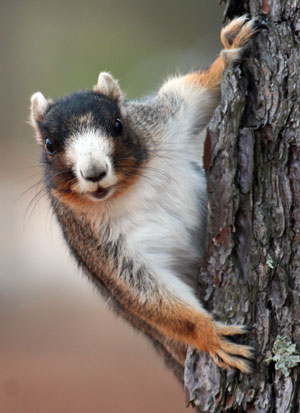

One of the most noticeable problems caused by gray squirrels is their habit of gnawing on houses, garages, and other buildings. In addition, squirrels will feed on plant blossoms and bulbs, severely damaging or killing ornamental plants. Establishing new caches and accessing previously established ones in lawns can cause holes and damage to turf. Squirrels are considered “scatter-hoarders,” which describes their instinctual habit of creating caches of stored food. Squirrels cause issues to homeowners as they feed on hard and soft mast trees, such as pecans and ornamental fruit trees. Gray squirrels spend much of their time foraging for food, which results in frequent conflicts with humans. Common Squirrel Damage Issues Squirrel Foraging Damage These two factors make squirrel control and damage reduction a realistic goal over eradication for most nuisance issues addressed here.

In addition, gray squirrels breed twice a year (February/March and July/August) and typically have two to four young in a litter. As individual squirrels are removed from a population, others quickly move in to fill the void. In most cases, complete eradication and permanent removal of squirrels is unrealistic simply due to reproduction and immigration from other populations. Managing nuisance gray squirrels can be a time-consuming and difficult task that requires much patience.īefore beginning a squirrel management strategy, it is important to set realistic goals for what is considered effective management. Gray squirrels can become a problem to homeowners when they cause nuisance issues such as eating from bird feeders, scaring away birds, damaging homes or property, and caching food in attics or barns.


 0 kommentar(er)
0 kommentar(er)
